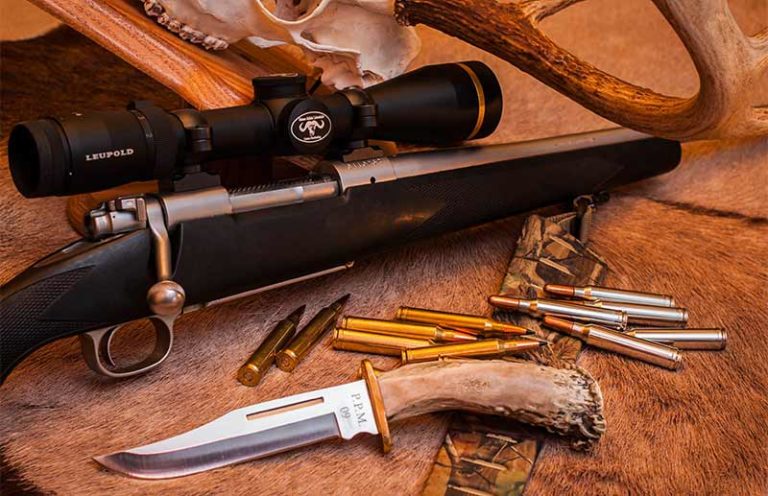
Choosing a rifle suitable for the traveling North American hunter.
I’ve lived in Upstate New York my entire life. I truly enjoy hunting my native ground, and both the Hudson Valley and Catskill Mountains offer many different hunting opportunities. But I also love collecting different experiences around the U.S. and other countries around the globe … and I couldn’t be happier that folks are once again starting to travel to hunt.
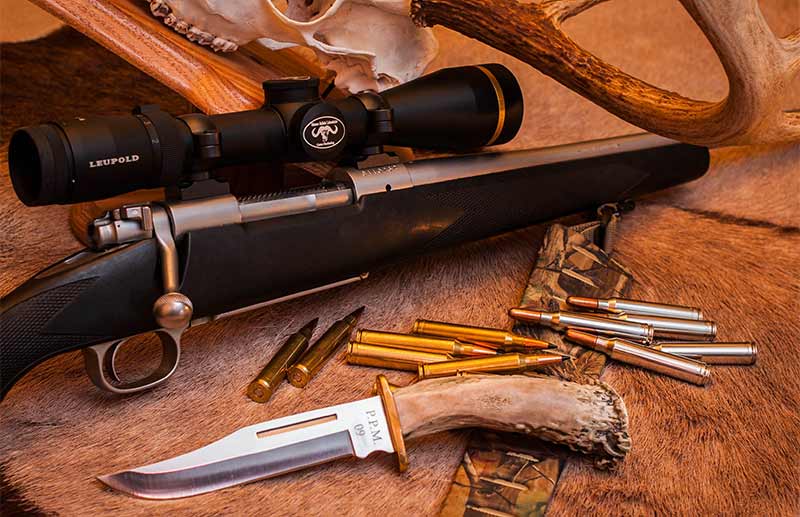
North America is a wonderfully diverse continent, offering hunting opportunities in radically different environments. From the steamy swampland of Florida, the arid badlands of the West, the sunbaked prickly pear flats of South Texas, the frozen Tioga of Quebec, Alaska’s rain-soaked coastal thickets to the hemlock forests of the Northeast, the weather and temperature can change considerably.
The “all-around” rifle is almost a myth; to find one single rifle/cartridge combination that’ll check all the boxes can be nearly impossible, though it has been done. Being honest with yourself about those species you truly intend to hunt will help mold the rifle that works best for you. For example, if a hunt for a coastal brown bear or a Plains bison just isn’t realistic, you may not need a cartridge on the heavier end of the spectrum.
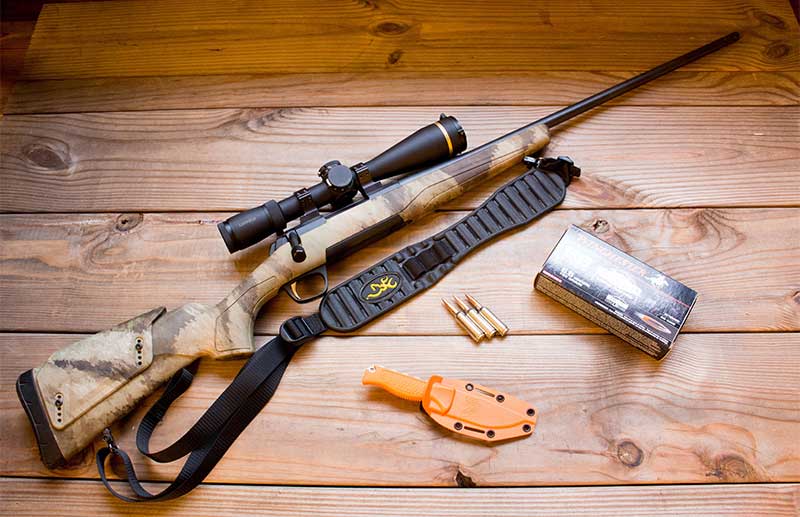
What Actions Work Best?
We’re talking a universal rifle, so I feel that the bolt-action rifle is the obvious choice, as they handle the fastest and most powerful cartridges, as well as the standard offerings. I can hear the single-shot crowd starting to grumble already, so if a Ruger No. 1 or similar rifle tickles your fancy, so be it. Like the bolt-action, they can handle just about any cartridge. I appreciate the rapidity of a follow-up shot, so my choice is the bolt-action rifle. They’re relatively light, wonderfully accurate and utterly reliable.

We could also argue the push-feed versus controlled-round feed feature, and both have their advantage. Personally, I prefer a controlled-round action with a fixed magazine for the simplicity. I tend to lose things—like detachable magazines—so I like the idea of less moving parts. That said, the modern push-feed rifles seem to be reliable; I’ve seen fewer broken extractors in recent years. If you feel the Mauser 98-style actions aren’t for you, there are some hybrids like the Ed Brown M704, which combines features of push-feed and CRF for a rock-solid design.
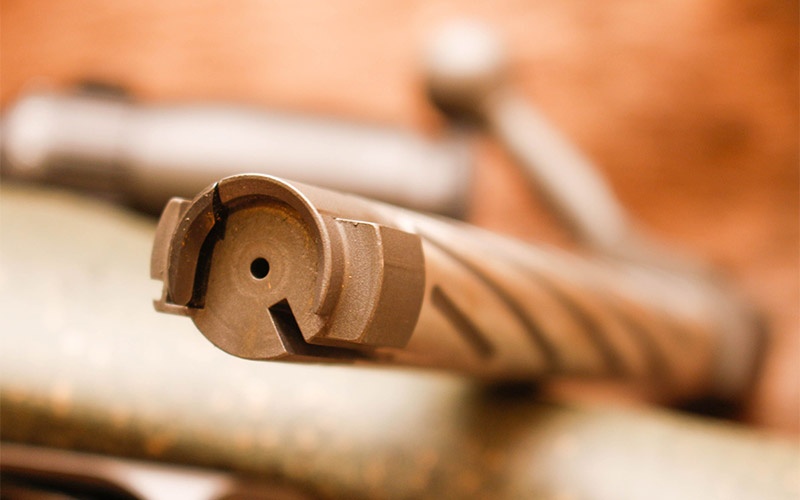
Triggered
There are some rifles that’ll absolutely check all the boxes … but have a terrible trigger. Nothing ruins a good rifle like a heavy or mushy trigger. If you’ve found the rifle you like has an unacceptable trigger or is a detriment to accurate shooting, either have it professionally adjusted to break cleanly or replace the trigger altogether.

I’m a fan of Timney triggers and have relied on them to replace some triggers that took over 6 pounds of force to break, making a dog of a rifle into a gem. Other aftermarket brands to consider include TriggerTech and Velocity.
Taking Stock
I love walnut. It’s warm, can offer an incredible figure one could stare into for hours, ages wonderfully and can be shaped into works of art. But, and that’s a big but, it can and will swell in truly wet weather. Its finish will wear off under heavy use and, in the worst scenarios (like a fall while hunting), can crack to the point of being unusable. I have some walnut-stocked rifles that I wouldn’t trade for anything, but those guns don’t make the best choice for a do-all North American rifle.
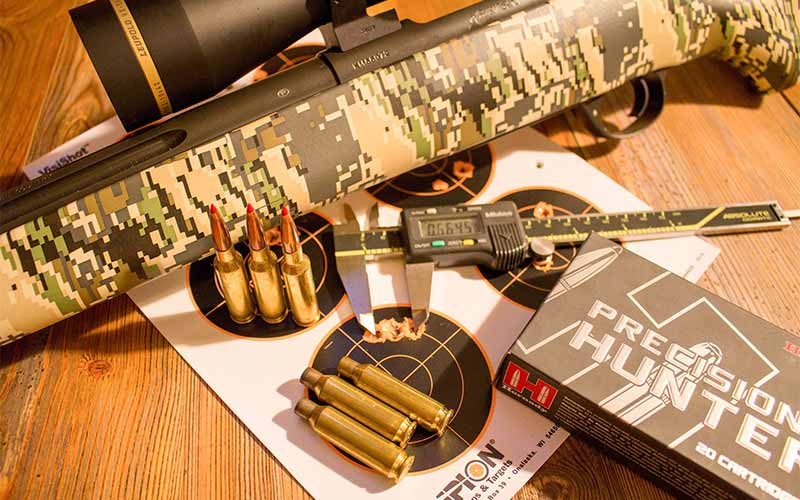
The synthetic stock has come a long way in the past couple of decades, and while they’ll never have the soul of a premium walnut stock, they’re utterly reliable. Mated with aluminum pillar bedding, the synthetic stock will keep the action snugly cradled without demonstrating any changes due to the environment.
For a rifle destined to see a wide variety of temperature/humidity combinations, synthetic is my suggestion. If you absolutely can’t stand the idea, look to one of the laminate wood stocks, as they’re rather solid and can take a beating. From the scree-slides of Alaska, carrying your rifle in a scabbard on an errant horse, to climbing in and out of sketchy tree stands, a synthetic or laminate will hold up best.
What Cartridge?
Looking at the variety of big game species we have here in North America, picking a single cartridge can be a difficult proposition. Like it or not, many have used the same Remington .30-06 rifle to take all of the available North American big game species, and this choice is a perfectly logical one. With 130-grain bullets, the good old ought-six shoots flat enough to reach out for Coues deer, Dall’s sheep and pronghorn antelope. With a good 180-grain bullet, there isn’t too much that can’t be done at sane ranges, especially with today’s premium bullet designs.

With the 200- and 220-grain slugs, moose, bison and even the coastal brown bears can be taken. With the latter, however, I feel you’re definitely on the lighter side of the spectrum. I also feel that if the .30-06 Springfield can do it, the .280 Remington and 7mm Remington Magnum can also: Look to the premium 175-grain bullets in 7mm—and the .300 Winchester Magnum, .300 Weatherby Magnum and .300 Remington Ultra Magnum will handle the spectrum a bit better than the .30-06 due to higher velocities and flatter trajectories.
The .338 Winchester is the Alaskan catch-all cartridge, but the recoil can be severe in lighter rifles, and the .338 Win. is a bit heavy for pronghorn, even with the 180-grain bullets. If you’re the traveling hunter whose interests stop at the deer species (save moose), the case could be made for one of the 6.5mms or a .270 Winchester.
Ammunition availability is another important factor. I used to say you could find a box of .30-06 or .308 in any sporting goods store or gun shop, but that might not hold water anymore, considering nearly all the shelves are universally empty. When ammo is available, I’ve seen just about as much .300 Winchester Magnum and 7mm Remington Magnum, so don’t count those magnums out.
Glass and Mounts
With the exception of lever guns and dangerous-game rifles, iron sights are—sadly—going the way of the dodo. The riflescope, once considered suspect in its reliability, has taken over, and modern scopes are more reliable than they’ve ever been. Tube diameters are growing in size, magnification ranges seem to increase each year and there are models with objective lenses large enough to detect life on other planets.
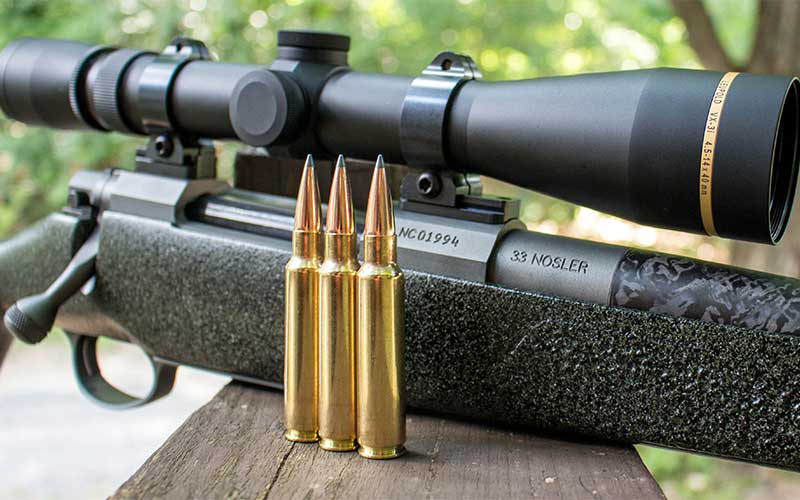
I prefer the most versatile magnification range I can get, in a bright scope, that I can mount as low to the bore as possible and light enough to maintain the balance of the rifle (that’s a lot to ask, I know). The 30mm main tube scopes give plenty of elevation adjustment and lets in a bit more light than their 1-inch counterparts.
I don’t really see the point of having an objective lens much bigger than 40 or 42mm, as the exit pupil becomes larger than what our eyes can use. One thing I do want, however, is enough eye relief so that there’s no chance of getting “bit” at any angle. I prefer a magnification range in the realm of 2-10x or 2-12x for an all-around scope.
If it’s a premium-quality scope—and I highly recommend spending a good portion of the budget on the scope—a top end somewhere between 10x and 14x should handle long shots on elk, sheep, Coues deer, etc. I also want a low end of no more than say 4.5x. Sooner or later you’re going to be presented with a close shot in thick vegetation, and if the magnification is too high, all you get is a blur of leaves and fur, making shot placement difficult.
For one scope to cover all the bases, I’d say one of the modern scopes that offers an elevation turret easily dialed for longer distances, a reticle with graduations for wind deflection adjustments and a parallax adjustment/focus knob will serve you best.
Your mounting system is responsible for one thing: keeping the scope where you put it. I prefer steel bases and rings, as they seem to handle the rigors of recoil best. I use many brands but prefer Talley over the rest of the field, as I've had them on rifles chambered for varmint cartridges all the way up to the big safari cartridges without issue. For the purposes of a traveling rifle, one could use Talley’s detachable mounts (or a similar model from another brand) to keep two scopes—each its own set of mounts—zeroed, so that in the event you bump or damage your scope, you can simply screw the spare scope on and continue your hunt. Hopefully you won’t need it, but I know Mr. Murphy and his laws way too well.
Finish It
Like walnut, blued steel is beautiful to look at and is relatively durable. Yet, the spray-on coatings like Cerakote offer a new level of resistance to the elements. Cerakote now comes in a wide range of colors, so a traditional-looking finish is as readily available as one of the more radical-looking finishes.
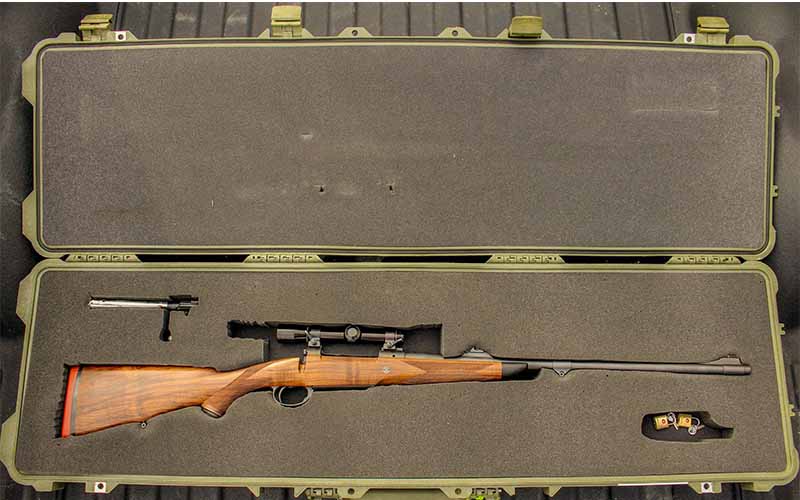
If you want a custom look, it isn’t difficult to have a qualified gunsmith coat the exposed metal work in a nearly impervious finish. Stainless steel is another option and was popular in the 1990s as a weather-proof option—though it’s a bit bright in the field. I don’t mind a stainless finish, providing it’s a matte finish to cut down the glare while hunting, but see the advantage of a good Cerakote finish.
This One is Mine
My main “traveling” rifle—set up almost 2 decades ago—is a Winchester Model 70 Classic Stainless, with the black polymer stock (I’d like to revise that to a Bansner stock in the near future), chambered in .300 Winchester Magnum and topped with a Leupold VX-6 2-12x42mm scope.
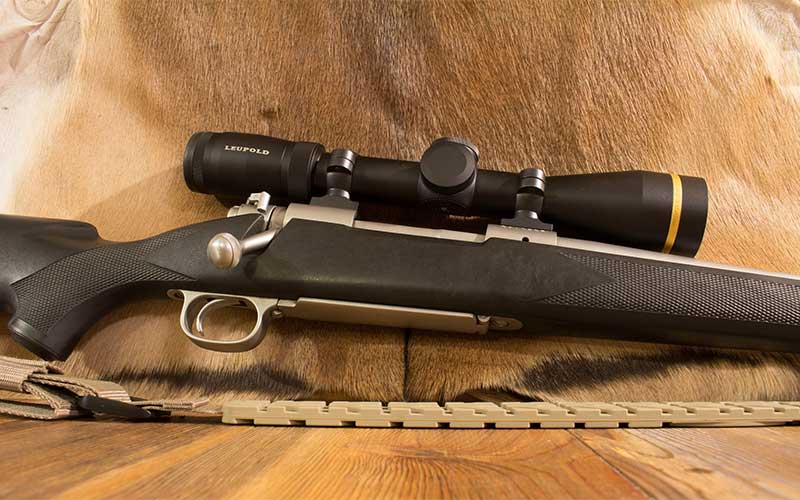
This rifle shoots many different loads—both factory and handloaded—into sub-MOA groups, and has been all over North America with me. It has taken whitetail deer, black bear, pronghorn antelope, aoudad and more, and it’s by no means done yet. With a controlled-round action, a great trigger (factory, but properly adjusted) and the capability of hunting at any range I feel comfortable, it’s just one of many answers to the “all-around” traveling rifle question.
Editor's Note: This article originally appeared in the September 2021 issue of Gun Digest the Magazine.
More On Precision Rifles:
- Top 17 Affordable Precision Rifles
- How To Buy Or Build A Custom Precision Rifle
- Precision Rifle Training: The Edge You Need For Hunting Season
- Gun Review: Ruger Precision Rifle In 6mm Creedmoor

Next Step: Get your FREE Printable Target Pack
Enhance your shooting precision with our 62 MOA Targets, perfect for rifles and handguns. Crafted in collaboration with Storm Tactical for accuracy and versatility.
Subscribe to the Gun Digest email newsletter and get your downloadable target pack sent straight to your inbox. Stay updated with the latest firearms info in the industry.

![Best Concealed Carry Guns In 2025 [Field Tested] Wilson Combat EDC X9S 1](https://gundigest.com/wp-content/uploads/Wilson-Combat-EDC-X9S-1-324x160.jpg)


![Best 9mm Carbine: Affordable PCCs [Tested] Ruger Carbine Shooting](https://gundigest.com/wp-content/uploads/Ruger-Carbine-Shooting-100x70.jpg)
![Best AR-15: Top Options Available Today [Field Tested] Harrington and Richardson PSA XM177E2 feature](https://gundigest.com/wp-content/uploads/Harrington-and-Richardson-PSA-XM177E2-feature-100x70.jpg)

One of the surprising things I have seen is an Alaskan Inuit carrying a .270 for Polar Bears. They live there and are experts on what works for them.
My answer to an all around rifle is a 6.5 PRC Browning X-Bolt Pro with stainless barrel and action, carbon fiber stock and bronze Cerakote on all metal pots and the stock too.
Topped with a Bushnell Elite LRTS 4.5 – 18 x 44 scope & G3 reticle in Talley bronze Cerakoted rings it makes an all-round western states rifle.